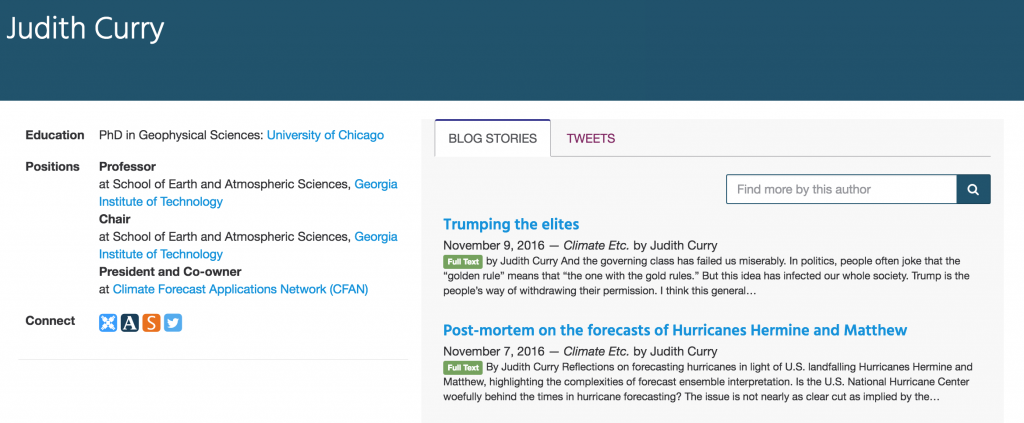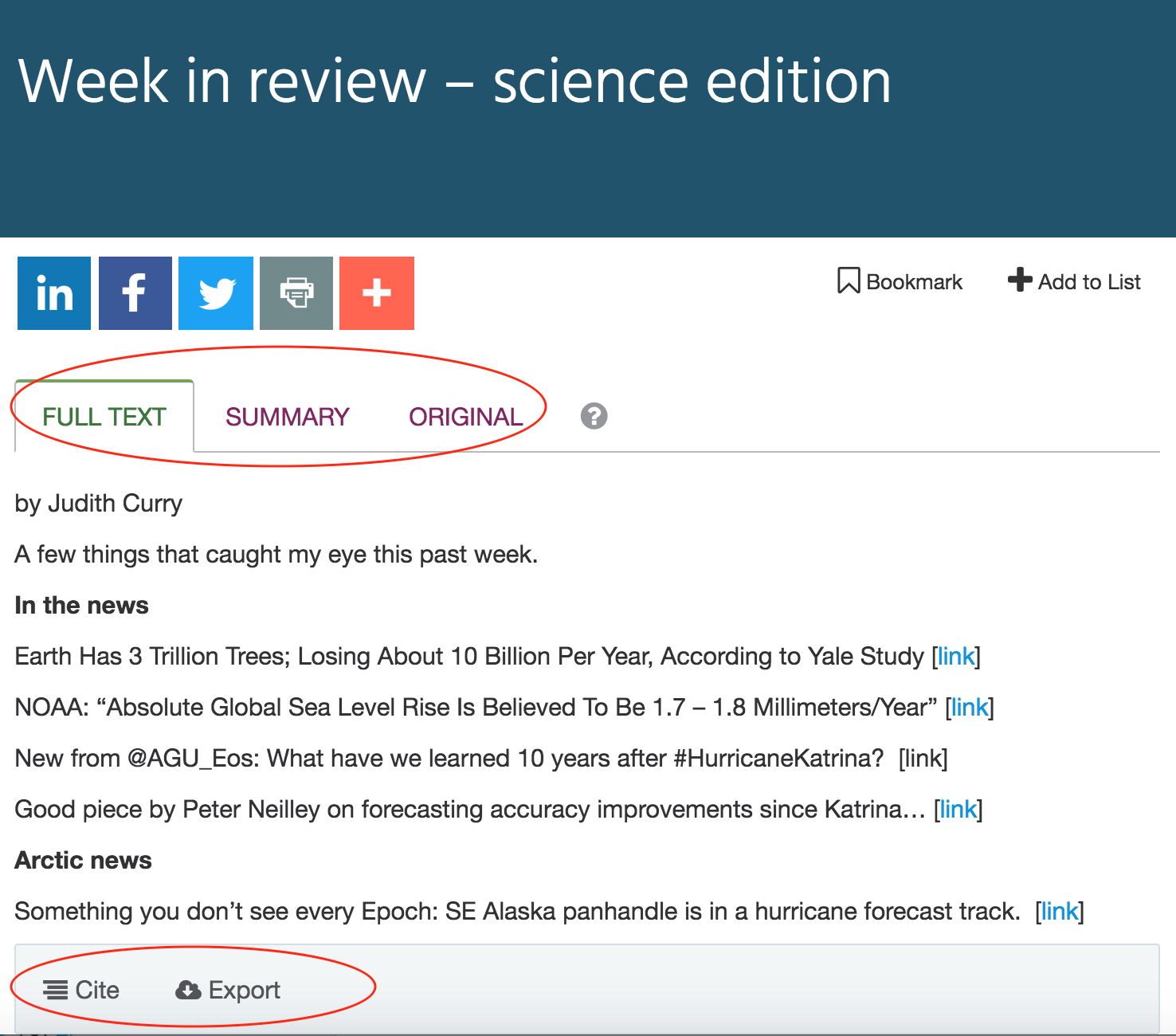The Importance of Tracking Blog Post Mentions of Research
Recently we announced a partnership with ACI Information Group to bring more blog post mentions to PlumX.
ACI individually curates blogs through researchers with expertise in each blog’s topic or field of study in a variety of academic and research disciplines. This provides an opportunity to find adjacent research or to make a connection with an expert.
Blogging Becoming an Accepted Scholarly Communication Vehicle
It’s no secret that the academic world is embracing blogging and social media, either by desire or by professional expectation. The mainstream media is catching this wave too, with scholarly blog posts mentioned in mainstream press around the globe, including some of the top news media outlets in the world, such as the Guardian in London and the New York Times.
Recently, in Aslib Journal of Information Management, Stefanie Haustein, Cassidy R. Sugimoto, and Vincent Larivière wrote a guest editorial titled, “Social Media in Scholarly Communication.” In it they concluded:
After decades of studying scholarly communications almost exclusively with papers and citations, scholars now have access to new sources of evidence which, in turn, has brought new energy to the science indicators community.
We recognize this new energy and harness it through our altmetrics category Mentions. These blog post mentions and other metrics that Plum Analytics tracks are becoming more accepted in the process of analyzing and understanding the interest and attention of research.
So Why Do Academics Blog? The Answers Vary. A Study of Blogs Reveals….
In the Guardian’s Higher Education blog, authors Pat Thomson and Inger Mewburn looked into why academics blog. They conducted a study, analyzing a sample set of 100 blogs. These blogs are from these countries: UK, 49; US, 40; Canada, 5; Australia, 6. Eighty were from teaching and researching academics. Fourteen were from para-academics and six were by doctoral researchers.
Their study “Why do academics blog? It’s not for public outreach, research shows” found that:
- 41% focused mostly on what the authors called ‘academic cultural critique — comments and reflections on funding, higher education policy, office politics and academic life.
- 40% largely focused mainly on communication and commentary about research.
- The remainder covered a diverse range, from academic practice, information and self-help advice to technical, teaching and career advice.
- 73% of the content they analyzed was aimed at other academics.
- 38% was designed for interested professional readers.
Their conclusion from this sample was that most academics are blogging for peers rather than for the public.
The authors described their understanding of the academic blogosphere as a sort of global, virtual meeting space where group conversations are had around different tables.
They also view blogging as a variation of open access publishing. Among the advantages they mentioned here are that research can come out faster, it can be shared and commented on preliminarily, and that commentary is more relaxed or opinionated since it is outside of the normal peer review. The authors also said that,
More importantly perhaps thanks to Google and other search engines, other people can find us and connect more easily. Our opinions are out there to be critiqued by our audience – if we let them. In this our ideas can be challenged, extended or affirmed – in almost real time.”
Advantages of ACI Content in PlumX
Let’s take a look at how Plum Analytics integrates with ACI for blog post mention metrics and show some of the advantages of this partnership.
ACI Scholarly Blog Mentions will appear in the Blog Mentions tab with other mentions from sources curated by PlumX. PlumX links to ACI Scholarly Blog content in the ACI platform, where users can access several of the platform’s features. Let’s look at an example of an article in PlumX that is mentioned by two scholarly blog posts from ACI:
Showing these blog posts through the ACI platform affords you several advantages.
Archived Content:
Clicking on the ‘Read Full Blog Post’ button provides access to the full text of the blog post. ACI archives blog content, in full text when available. Even if the original blog post has been moved or taken down, ACI’s archived content (full text or a summary of the blog post) will still be available.
Enhanced Blog Author Profiles:
Clicking on the blog author name (“Anthony Watts” or “Judith Curry” in the above example) links to ACI’s Blog Author Profile page. This page includes details about the blog post author’s education, positions and other publications.


Blog Citation and Export:
Looking to include references to a blog post to reference in an academic work? ACI allows you to cite in MLA, APA or Chicago formats, or export the full text of the blog mention.
